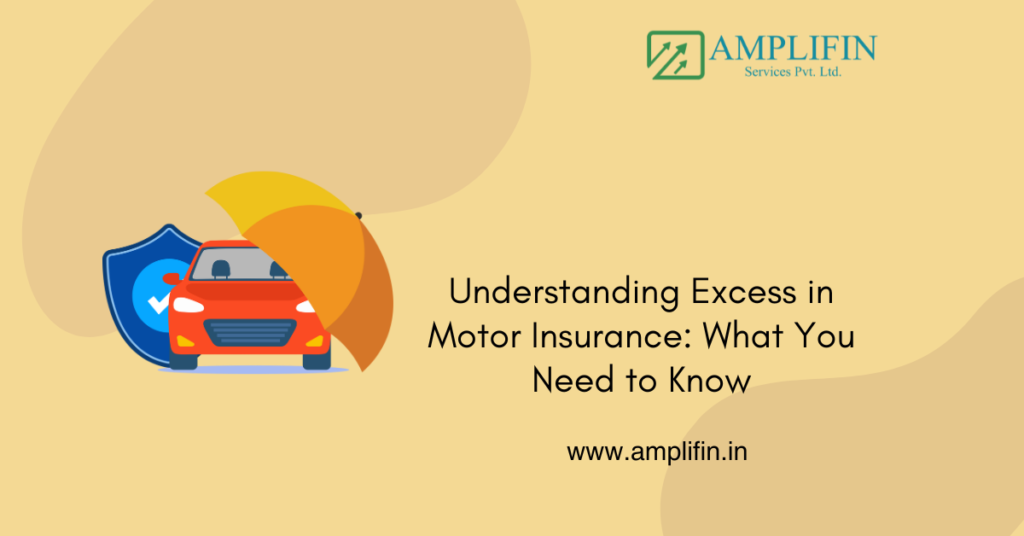Everything You Need to Know About Car Insurance Excess: Understanding Voluntary and Compulsory Excess
Car insurance is a necessary financial product that ensures protection for your vehicle in case of accidents, theft, or damage. However, there’s an important element of car insurance that often confuses many drivers: the concept of insurance excess. This article aims to break down the different aspects of insurance excess, from what it means to how it can impact your car insurance premiums. If you’re looking to understand how excess works, the difference between voluntary and compulsory excess, and how it can affect your insurance claims, this guide is for you. By the end of this article, you’ll have a better understanding of excess in car insurance and how you can manage it to your advantage.

Outline
- What is Excess in Car Insurance?
- How Does Insurance Excess Work?
- What is Compulsory Excess and How Does It Affect You?
- Voluntary Excess: Is It Worth the Extra Risk?
- What is the Difference Between Compulsory and Voluntary Excess?
- The Impact of Excess on Your Car Insurance Premium
- How Can You Lower Your Insurance Excess?
- Understanding the Role of Excess Protection Insurance
- How to Choose the Right Excess for Your Car Insurance
- Everything You Need to Know About Making a Claim with Excess
1. What is Excess in Car Insurance?
When you take out a car insurance policy, you’ll notice a term called “excess.” But what does excess mean in car insurance? The excess is the amount of money that you, as the policyholder, must pay out of pocket when making a claim. In simple terms, it is the deductible that you must pay before your insurance company covers the remaining cost of the damage or loss. Excess applies to all types of claims, whether for accidents, theft, or damage caused by natural disasters.
The main purpose of excess is to ensure that the insured party is responsible for a portion of the claim, which helps keep car insurance premiums lower. Insurance excess can vary significantly depending on the type of coverage, your insurance provider, and your specific policy terms. It is important to know how excess works as it can impact both your financial obligations and your car insurance premium.
2. How Does Insurance Excess Work?
Insurance excess works by shifting part of the financial burden of a claim from the insurer to you, the policyholder. For example, if your car suffers damage that costs £1,000 to repair and your excess is £200, you’ll need to pay the first £200, while your insurance company will cover the remaining £800.
Excess can be mandatory or optional. Mandatory excess is set by the insurance company and is applied regardless of your decision. Optional excess, on the other hand, is where you, as the policyholder, can choose the amount of excess you want to pay in exchange for a potential reduction in your insurance premium.
3. What is Compulsory Excess and How Does It Affect You?
Compulsory excess is the amount that an insurance company automatically applies to your policy. This is non-negotiable and is typically based on factors such as your vehicle’s value, the type of coverage, and the risk profile assessed by the insurer. Compulsory excess is set by the insurance company and must be paid in the event of a claim.
The amount of compulsory excess can vary, and while it’s often lower than voluntary excess, it can still be a significant amount that you need to be prepared for when making a claim. It’s important to carefully review your insurance policy documents to understand the compulsory excess amounts and how they can affect your potential claims.
4. Voluntary Excess: Is It Worth the Extra Risk?
Voluntary excess is an additional amount that you agree to pay on top of the compulsory excess. Choosing a higher voluntary excess can lower your insurance premium because the insurer assumes that you’ll be covering more of the claim. However, it’s crucial to weigh the savings on your premium against the extra financial risk.
While opting for a higher voluntary excess can help lower your car insurance premium, it’s important to ensure that you can comfortably afford the excess amount if you ever need to make a claim. For example, if you opt for a voluntary excess of £500, you will need to pay that amount out of pocket before your insurer covers the rest of the claim.
5. What is the Difference Between Compulsory and Voluntary Excess?
The main difference between compulsory and voluntary excess lies in who sets the amount and how it’s applied. Compulsory excess is set by the insurance company and is automatically applied to your policy. Voluntary excess, on the other hand, is something you can choose based on how much you’re willing to pay upfront in exchange for a lower premium.
The total excess you would need to pay in the event of a claim is the sum of both the compulsory and voluntary excess amounts. For example, if your compulsory excess is £200 and your voluntary excess is £300, your total excess in the event of a claim would be £500.
6. The Impact of Excess on Your Car Insurance Premium
The level of excess you choose directly influences your car insurance premium. Generally, the higher the excess, the lower the premium. This is because you’re agreeing to take on more of the financial burden in the event of a claim, which reduces the insurer’s risk.
However, it’s essential to strike a balance between lowering your premium and ensuring that you can comfortably afford the excess amount if you need to make a claim. While opting for a higher voluntary excess can save you money on your premium, it could also leave you financially vulnerable if an unexpected event occurs.
7. How Can You Lower Your Insurance Excess?
There are several ways you can lower your insurance excess, including:
- Increasing Your Voluntary Excess: By opting for a higher voluntary excess, you can reduce your overall premium. However, be cautious and ensure that the excess remains affordable for you.
- Improving Your Car’s Security: Insurers may lower your compulsory excess if you take steps to improve your car’s security, such as installing an alarm or tracking device.
- Maintain a Good Driving Record: A clean driving history may reduce the insurer’s perceived risk and, as a result, lower your excess.
Be sure to compare excess amounts and premiums from different insurance providers to find the best balance for your needs.
8. Understanding the Role of Excess Protection Insurance
Excess protection insurance is an optional add-on to your car insurance policy that covers the excess you need to pay in the event of a claim. If you opt for a high voluntary excess to reduce your premium, you can purchase excess protection insurance to ensure that you’re not left financially vulnerable.
Excess protection insurance can be particularly helpful if you’re worried about affording the excess amount. For a small additional cost, you can ensure that you won’t have to pay the excess yourself, leaving you with fewer financial concerns if you need to make a claim.
9. How to Choose the Right Excess for Your Car Insurance
Choosing the right excess depends on several factors, including your financial situation, your driving habits, and how much you’re willing to pay for car insurance. When selecting your excess amount, consider:
- Your Budget: Ensure that you can afford to pay the excess if you need to make a claim.
- Your Premium: Evaluate the trade-off between a lower premium and a higher excess.
- The Value of Your Vehicle: Higher-value vehicles may require a higher excess, while a lower-value vehicle might benefit from a lower excess.
It’s important to choose an excess that makes sense for your individual circumstances and long-term financial goals.
10. Everything You Need to Know About Making a Claim with Excess
When making a claim, you’ll be required to pay the excess amount before your insurance provider covers the rest of the cost. This amount is deducted from your claim settlement. Understanding how excess works in the claims process is essential for managing your finances during an accident or damage to your vehicle.
It’s crucial to review your policy wording carefully to understand the types of claims that apply to the excess. For example, some insurance policies may have higher excesses for certain types of claims, such as accidents involving young drivers or specific high-risk events.
Key Takeaways:
- Excess is the amount you must pay when making a claim on your car insurance.
- Compulsory excess is set by the insurer, while voluntary excess is chosen by you.
- Higher voluntary excess can reduce your premium, but it also means you take on more financial risk.
- Excess protection insurance can cover the cost of your excess in the event of a claim.
- Choosing the right excess balance depends on your financial situation and the value of your vehicle.
- Always review your policy documents to understand how excess applies to different types of claims.
By understanding the various types of excess and how they affect your car insurance policy, you can make more informed decisions and ensure that you’re well-prepared for any eventuality.
